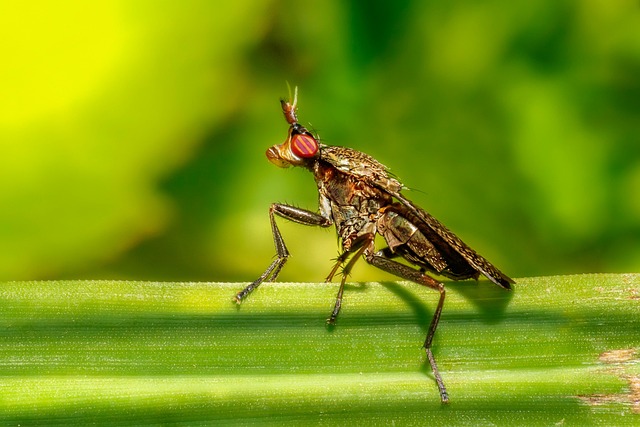The pest control industry is transitioning to eco-friendly pest treatment solutions as demand and consumer awareness grow. Traditional toxic chemicals are being replaced by safer alternatives like biological controls, physical barriers, plant-based repellents, and targeted baits. Professional pest control services now employ natural methods such as essential oils, diatomaceous earth, termite bait systems, ultrasonic devices for rodents, heat/cold treatments for bed bugs, organic acids for ants, and biodegradable pesticides for cockroaches. These effective pest treatments protect the environment, preserve water sources, and ensure a healthier ecosystem for future generations while effectively managing infestations of termites, rodents, bed bugs, and cockroaches.
In today’s world, the demand for humane and ethical pest control solutions is rising as we recognize the impact of traditional methods on both health and the environment. This comprehensive guide explores effective yet eco-friendly pest management strategies, catering to those seeking professional treatments without compromising sustainability. From understanding the benefits of eco-friendly practices to tackling specific pests like termites, rodents, bed bugs, and ants, this article provides valuable insights for a greener approach to pest control.
Understanding Eco-Friendly Pest Control: Benefits and Methods
Eco-friendly pest control is an approach that prioritizes environmental safety and sustainability while addressing pest issues. Unlike traditional methods that rely heavily on toxic chemicals, eco-friendly solutions offer safer alternatives for both humans and animals, with minimal environmental impact. The benefits are multi-fold; these treatments are not only effective in managing pest populations but also contribute to a healthier ecosystem. By avoiding harmful pesticides, we can protect local wildlife, preserve water sources, and ensure the well-being of future generations.
Several methods underpin eco-friendly pest control. Biological control involves introducing natural predators or parasites to target specific pests. For instance, beneficial insects like ladybugs and spiders can be used to combat aphids and cockroaches respectively. Physical barriers, such as mesh screens and traps, are also effective in preventing rodent entry into homes and buildings. Additionally, plant-based repellents and essential oils offer natural ways to deter insects without causing harm. Termite treatment services, for example, can utilize environmentally friendly baits that target specific termite species while minimizing chemical use. In the case of bed bug treatment options, heat treatments and steam cleaning are proven to be effective, eliminating pests without resorting to insecticides.
– The growing need for sustainable pest management
In today’s world, there is a growing need for sustainable pest management practices as the demand for professional pest control services continues to rise. Traditional methods, often involving toxic chemicals, are no longer considered acceptable by many due to their potential harm to both humans and the environment. As such, eco-friendly pest solutions have become a priority, with consumers seeking effective pest treatments that minimise environmental impact without compromising on results. Termite treatment services, rodent control options, bed bug eradication methods, and cockroach treatment strategies are all areas where professionals are developing innovative, sustainable approaches to meet this growing demand.
The shift towards humane and ethical pest control solutions is driven by a combination of factors, including regulatory changes, consumer awareness, and the recognition that long-term sustainability requires a balanced approach. Effective pest treatments that rely on non-toxic methods, biological controls, and targeted applications are gaining popularity. These approaches not only protect homes and businesses from pests but also contribute to a healthier environment for everyone involved.
– Overview of eco-friendly practices in professional pest control
In the realm of professional pest control, there’s a growing emphasis on eco-friendly practices that balance effective pest treatments with minimal environmental impact. These innovative solutions are revolutionizing the industry, offering humane and ethical approaches to managing pest infestations. Eco-friendly pest control methods employ natural repellents, non-toxic baits, and integrated pest management (IPM) strategies to target specific pests effectively while preserving biodiversity and reducing chemical exposure.
From termite treatment services to rodent treatment solutions, bed bug treatment options, and cockroach treatment services, professionals are adopting effective eco-friendly pest treatments. For instance, using plant-based repellents like neem oil or essential oils not only deters pests but also poses less risk to non-target organisms and the environment. Similarly, IPM combines biological controls, such as introducing natural predators, with cultural practices like proper sanitation to create a holistic approach to pest management. This shift towards green practices ensures that both properties are protected from infestations and the broader ecosystem remains undisturbed.
– Common eco-friendly tools and techniques
Pest control doesn’t have to be harmful to the environment. Many professional pest control companies now offer eco-friendly pest solutions that are both effective and humane. Common tools include natural repellents like essential oils, diatomaceous earth, and boric acid, which are safe for pets and humans but deadly to pests. These substances disrupt the insect’s outer shell or nervous system, respectively, without leaving toxic residues.
For termite treatment services, eco-friendly options include bait systems that use non-toxic substances to attract and eliminate termites. Rodent treatment solutions often involve using sound waves, ultrasonic devices, or natural predator scents to deter rodents. Bed bug treatment options may incorporate heat treatments or cold treatments, both of which are effective in eliminating bed bugs without resorting to harmful chemicals. Similarly, ant infestation treatments can use organic acids or essential oils as a substitute for synthetic insecticides. Even cockroach treatment services have embraced eco-friendly practices, employing natural deterrents and targeted applications of biodegradable pesticides when necessary.
In today’s world, embracing humane and ethical pest control methods is not just a moral imperative but a necessity. By opting for eco-friendly pest treatment solutions, professionals can offer effective services while minimizing the environmental impact. From termite to bed bug infestations, innovative techniques such as natural repellents, non-toxic baits, and targeted applications ensure the safety of both humans and the planet. As consumers become more conscious of sustainable practices, professional pest control services that prioritize eco-friendly pest solutions will be recognized as leaders in their field, providing peace of mind for those seeking reliable protection against pests without compromising on environmental stewardship.
